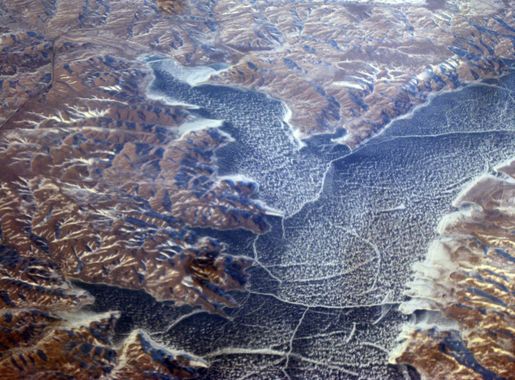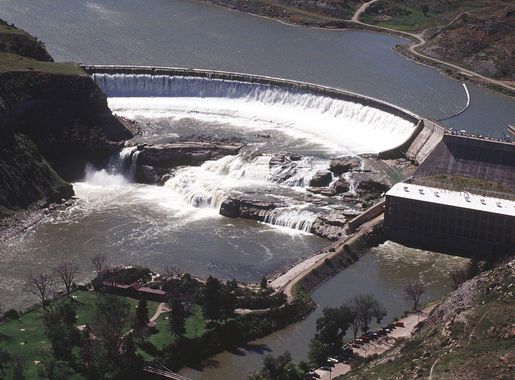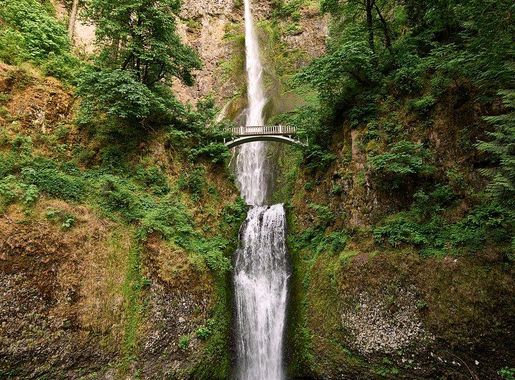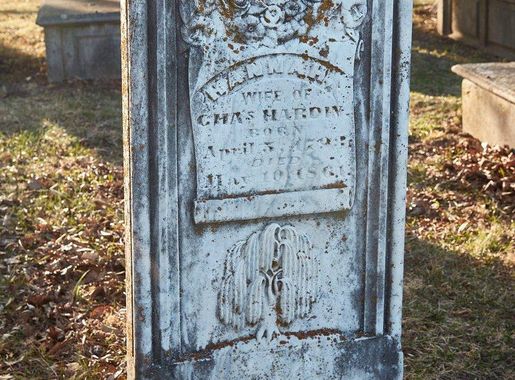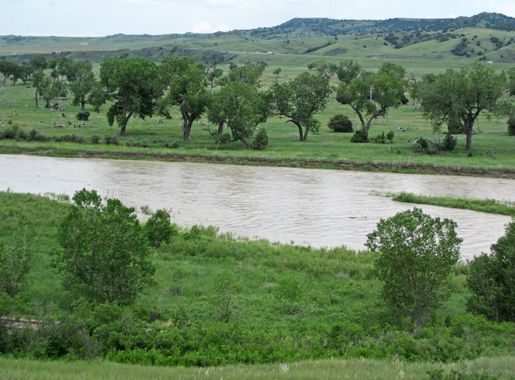
Lake Oahe: A Serene Haven in South Dakota
Discover the tranquility and natural beauty of Lake Oahe in South Dakota, a premier destination for fishing, boating, and exploring rich cultural heritage.
Lake Oahe, stretching over 230 miles along the border of South Dakota and North Dakota, is a stunning reservoir formed by the Missouri River. Its vast waters provide an idyllic setting for a variety of recreational activities, from fishing and boating to hiking and wildlife watching. The lake is named after the Oahe Dam, one of the largest dams in the United States, which was completed in the 1960s. The area around Lake Oahe is rich with cultural and historical significance. Visitors can explore remnants of Native American heritage, including sacred sites and ancient artifacts. The Oahe Mission, established in the 19th century, offers a glimpse into the region's past and its early settlers. Outdoor enthusiasts will find Lake Oahe a paradise. The lake is renowned for its excellent fishing opportunities, with species such as walleye, northern pike, and salmon thriving in its clear waters. Numerous campgrounds and picnic areas dot the shoreline, providing perfect spots for relaxation and family outings. Additionally, the nearby forests and rolling hills are ideal for hiking, bird watching, and photography, offering breathtaking views and a close connection with nature.
Local tips in Lake Oahe
- Plan your visit in late spring or early fall for the best weather and fewer crowds.
- Check local fishing regulations and obtain necessary permits before heading out.
- Bring binoculars for bird watching; the area is home to many unique species.
- Visit the Oahe Mission for a deeper understanding of the region's history.
- Pack a picnic and enjoy a meal by the lake at one of the many scenic spots.
Lake Oahe: A Serene Haven in South Dakota
Lake Oahe, stretching over 230 miles along the border of South Dakota and North Dakota, is a stunning reservoir formed by the Missouri River. Its vast waters provide an idyllic setting for a variety of recreational activities, from fishing and boating to hiking and wildlife watching. The lake is named after the Oahe Dam, one of the largest dams in the United States, which was completed in the 1960s. The area around Lake Oahe is rich with cultural and historical significance. Visitors can explore remnants of Native American heritage, including sacred sites and ancient artifacts. The Oahe Mission, established in the 19th century, offers a glimpse into the region's past and its early settlers. Outdoor enthusiasts will find Lake Oahe a paradise. The lake is renowned for its excellent fishing opportunities, with species such as walleye, northern pike, and salmon thriving in its clear waters. Numerous campgrounds and picnic areas dot the shoreline, providing perfect spots for relaxation and family outings. Additionally, the nearby forests and rolling hills are ideal for hiking, bird watching, and photography, offering breathtaking views and a close connection with nature.
When is the best time to go to Lake Oahe?
Unmissable attractions to see
Farm Island
Explore the vast landscapes and recreational wonders of Farm Island Recreation Area in Pierre, South Dakota, perfect for outdoor enthusiasts and families alike.
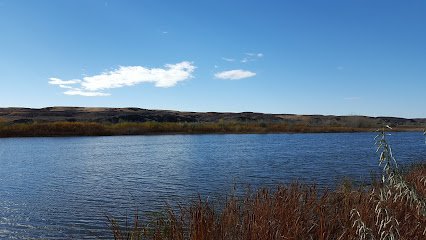
South Dakota State Historical Society
Explore South Dakota's vibrant history at the South Dakota State Historical Society in Pierre, showcasing Native culture, pioneer stories, and more.
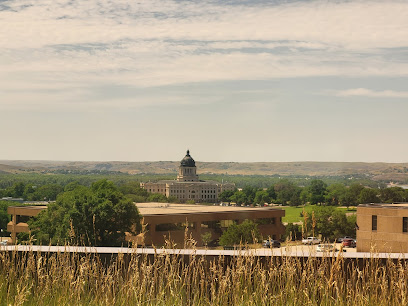
South Dakota State Capitol
Explore the South Dakota State Capitol, a stunning historical landmark blending art, architecture, and the rich heritage of South Dakota.
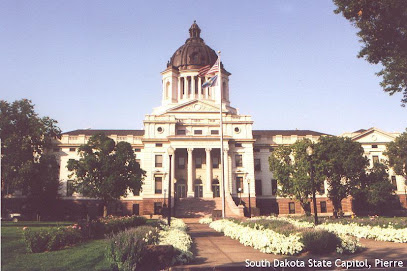
South Dakota Discovery Center
Discover the wonders of science at the South Dakota Discovery Center, an engaging museum filled with interactive exhibits for all ages.
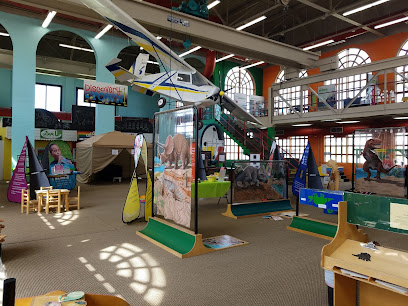
Fischers Lilly Park
Explore the natural beauty and historical charm of Fischers Lilly Park, a serene escape in Fort Pierre, South Dakota.
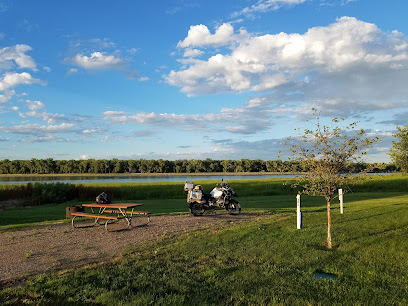
Casey Tibbs Rodeo Center Museum
Explore the legacy of rodeo at the Casey Tibbs Rodeo Center Museum in Fort Pierre, South Dakota, where history and culture of the wild West come alive.
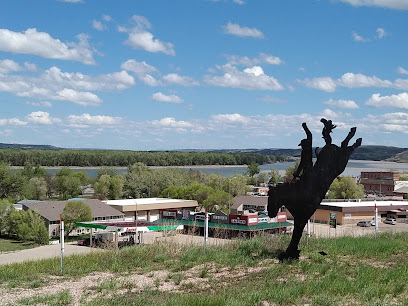
The Klein Museum
Explore the rich history and culture of Mobridge at The Klein Museum, a welcoming destination for tourists seeking local heritage and stories.

Oahe Mission School and Chapel
Explore the Oahe Mission School and Chapel, a historical landmark in Pierre, South Dakota, showcasing rich Native American heritage and educational history.
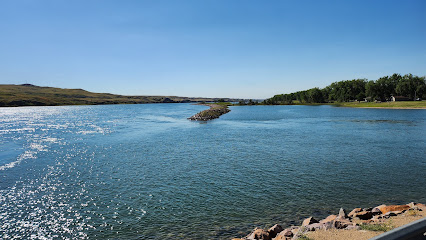
South Dakota National Guard Museum
Discover the history and heritage of South Dakota's military at the South Dakota National Guard Museum, where every exhibit tells a story.
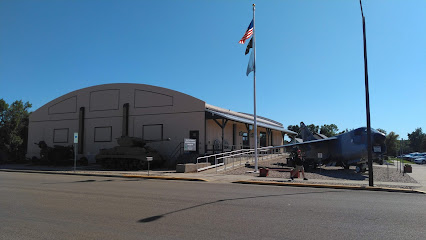
Fighting Stallions Memorial
Explore the Fighting Stallions Memorial in Pierre, SD, a tribute to military valor featuring striking sculptures set in a serene park atmosphere.
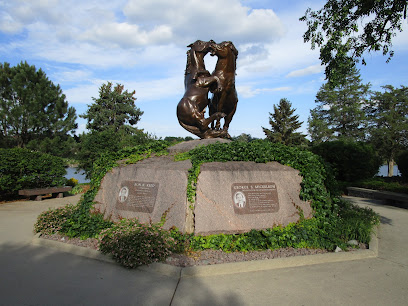
Verendrye Monument
Discover the Verendrye Monument, a historical landmark celebrating early exploration in Fort Pierre, South Dakota. A must-visit for history enthusiasts.

Flaming Fountain Memorial
Explore the Flaming Fountain Memorial in Pierre, SD – a serene tribute dedicated to honoring the sacrifices of veterans and celebrating their enduring legacy.
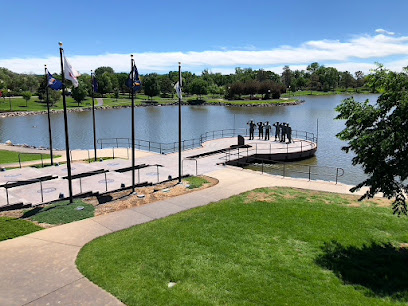
Dakota Sunset Museum
Explore the Dakota Sunset Museum in Gettysburg, SD – a captivating journey into the history and culture of South Dakota's vibrant heritage.
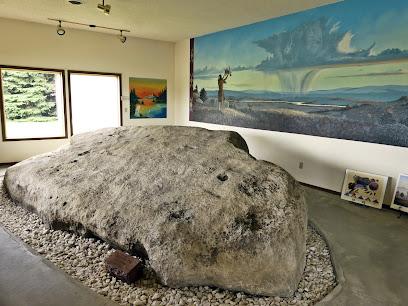
Verendrye Museum
Discover the captivating history of Fort Pierre at the Verendrye Museum, where local heritage comes alive through engaging exhibits and artifacts.
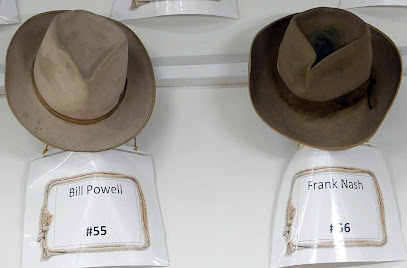
Fort Pierre Chouteau National Historic Landmark
Explore the rich heritage and captivating stories of the American frontier at Fort Pierre Chouteau National Historic Landmark, South Dakota's historical treasure.
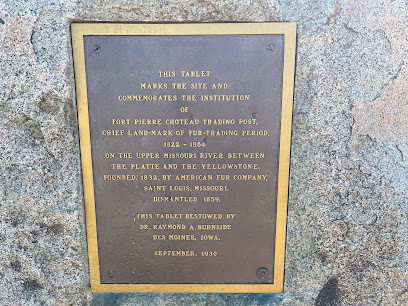
Essential places to dine
Arby's
Experience the taste of America at Arby's Oacoma - where savory meets convenience in every delicious bite.

Pizza Ranch
Experience delicious comfort food at Pizza Ranch in Fort Pierre - where pizza dreams come true!
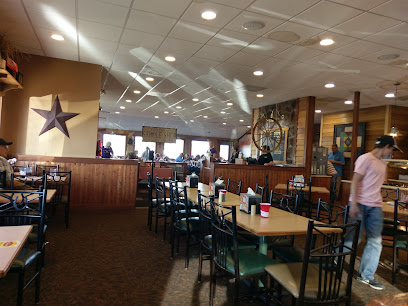
Taco John's
Savor the vibrant flavors of Tex-Mex cuisine at Taco John's in Chamberlain—your go-to fast food destination for delicious tacos and burritos.
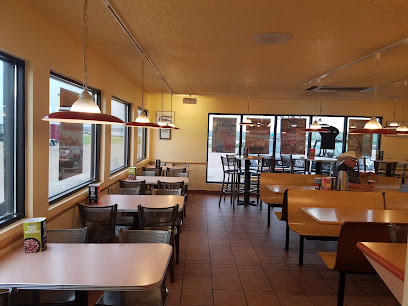
Ruby Tuesday
Experience classic American dining at Ruby Tuesday in Aberdeen - where comfort food meets warm hospitality.
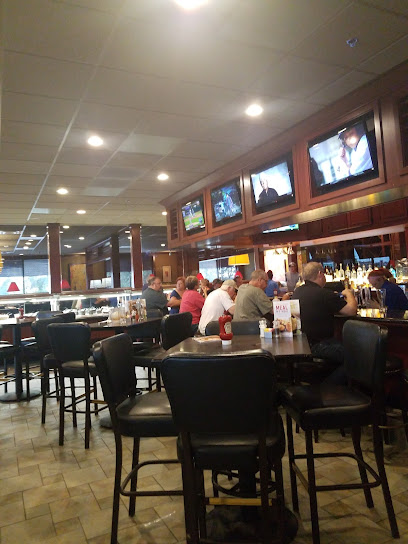
Bob's Steakhouse
Experience exquisite steaks with breathtaking views at Bob's Steakhouse in Gettysburg, SD - perfect for food lovers seeking memorable meals.
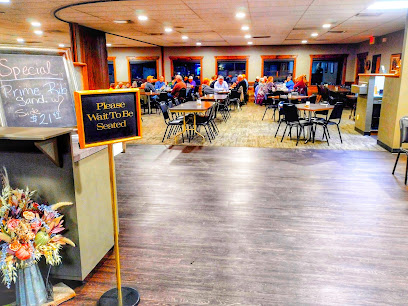
Dairy Queen Grill & Chill
Experience classic American fast food and irresistible ice cream treats at Dairy Queen Grill & Chill in Pierre, South Dakota.
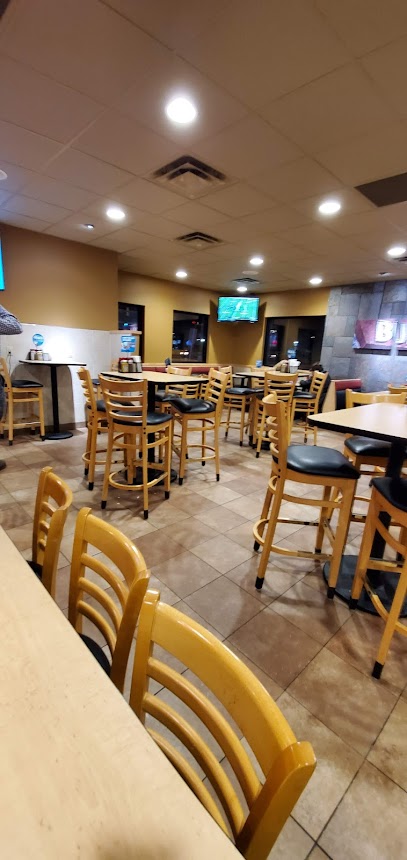
Laughing Water Restaurant
Experience local cuisine and warm hospitality at Laughing Water Restaurant in Custer, South Dakota - perfect for tourists exploring the Black Hills.

Pizza Hut
Discover delicious pizza and chicken wings at Pizza Hut in Aberdeen - perfect for families and friends on a budget!
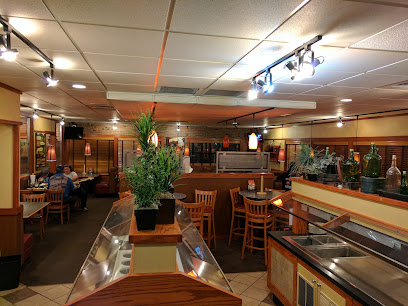
Subway
Experience deliciously fresh sandwiches at Subway in Hill City – where quality meets convenience for every traveler.
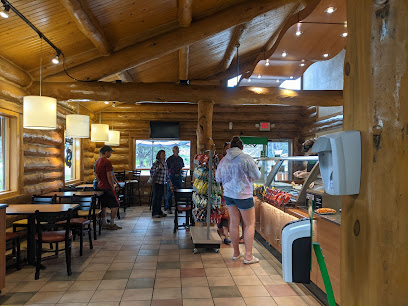
Dakota Maid
Discover Dakota Maid: A perfect blend of grill delights, craft beers, and local charm in Selby, South Dakota.

Markets, malls and hidden boutiques
Runnings
Experience the best of Pierre, South Dakota at Runnings, your go-to general store for clothing, outdoor gear, and more!
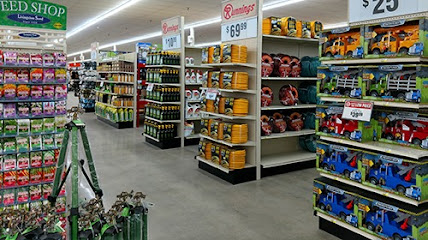
Hobby Lobby
Explore Hobby Lobby in Pierre, SD for a vast selection of craft supplies, fabric, and home décor to fuel your creativity and DIY projects.

Hempquarters605
Explore Hempquarters605 in Pierre, SD - A Unique Vaporizer Store with Candles, Gifts, and Local Artistry.
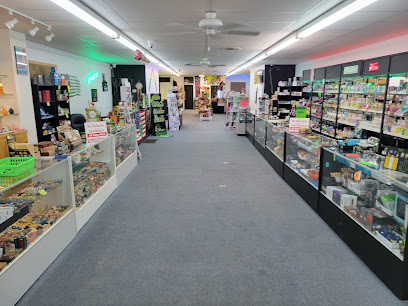
MasterPiece Smoke Shop
Discover a unique blend of artistry and specialty products at MasterPiece Smoke Shop in Pierre, South Dakota, a true gem for tourists.
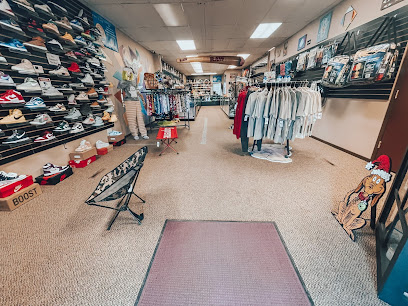
Hospice Thrift Store
Explore the Hospice Thrift Store in Pierre, South Dakota for unique finds and treasures while supporting hospice care in the community.
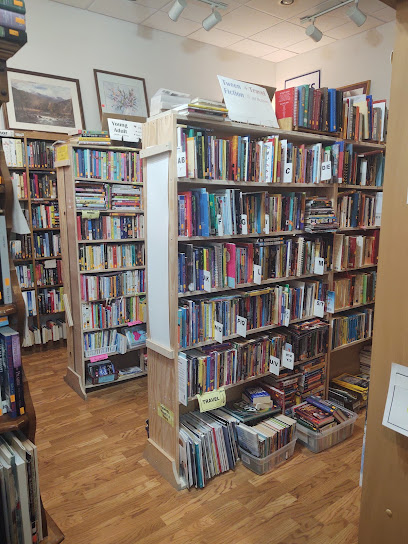
Oahes Corner Market & Floral
Explore Oahes Corner Market & Floral in Mobridge, SD – a charming shop blending floral artistry with unique gifts and local treasures.
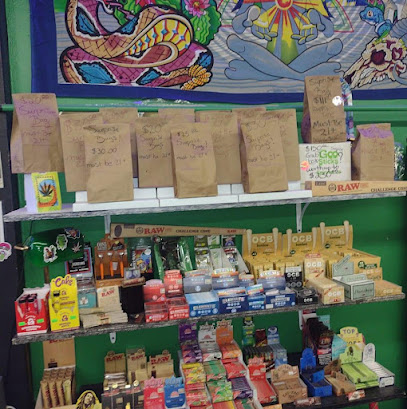
Bath & Body Works
Discover a fragrant paradise at Bath & Body Works, your go-to destination for beauty products, luxurious gifts, and enchanting candles in Pierre, SD.

Goodwill of the Great Plains
Explore sustainable shopping at Goodwill of the Great Plains in Pierre, SD—where unique finds meet community support and thrift store charm.
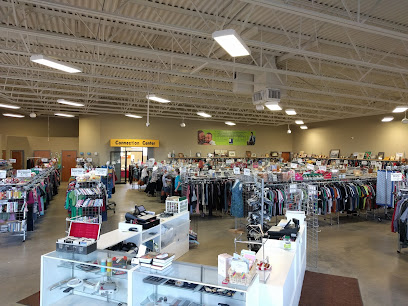
Total Beauty
Explore unique fashion finds at Total Beauty in Fort Pierre - where style meets affordability in the heart of South Dakota.
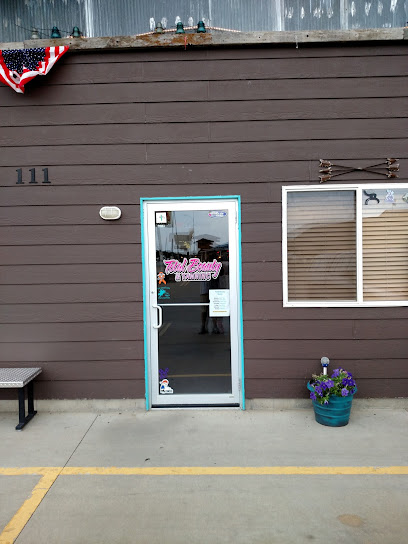
Second Edition
Explore unique fashion at Second Edition in Pierre, South Dakota, where every piece tells a story and adds flair to your wardrobe.

Lone Maverick
Explore Lone Maverick, the ultimate women's clothing store offering trendy styles and personalized service for every fashion lover.

Maurices
Discover stylish women's clothing at Maurices in Pierre, offering trendy outfits and plus-size selections for every occasion.
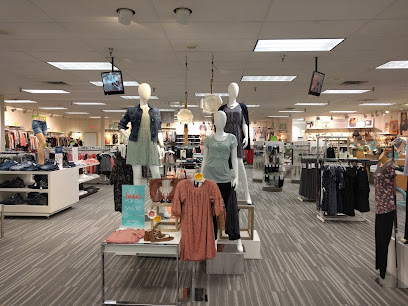
Northridge Plaza
Explore Northridge Plaza in Pierre, SD - a vibrant shopping mall with diverse stores and dining options for a perfect day out.
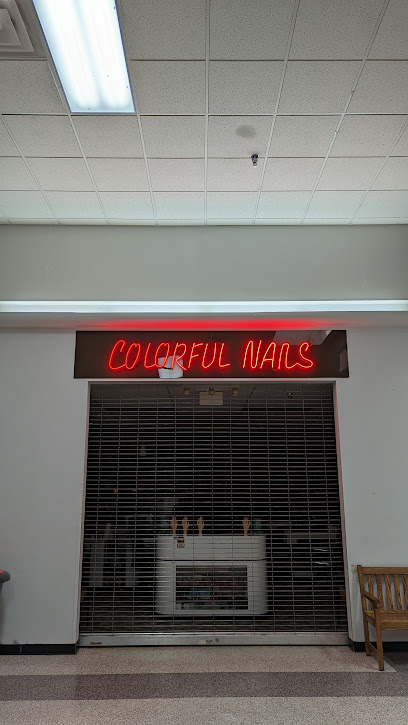
Fort Pierre Rock Shop
Explore the unique treasures of Fort Pierre Rock Shop, where geology meets history in a captivating shopping experience.
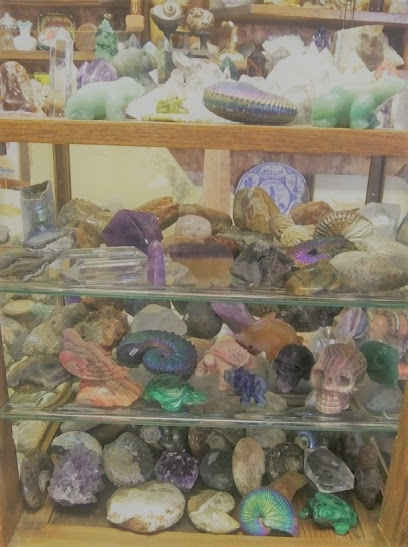
Quilt Yard
Discover the vibrant world of quilting at Quilt Yard in Pierre, South Dakota, where creativity and craftsmanship come together beautifully.
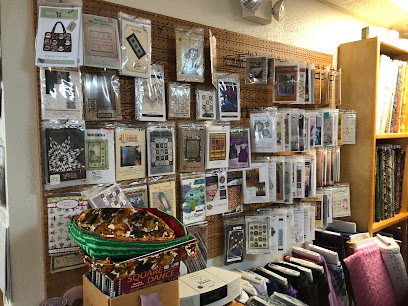
Essential bars & hidden hideouts
Drifters Bar & Grille
Experience the best of South Dakota's dining at Drifters Bar & Grille, where great food meets a welcoming atmosphere.
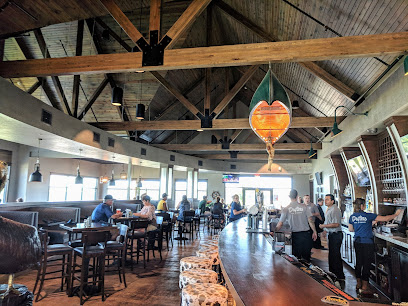
Jake's Good Times Place
Experience the delightful combination of grilled delicacies and innovative cocktails at Jake's Good Times Place in Pierre, SD.
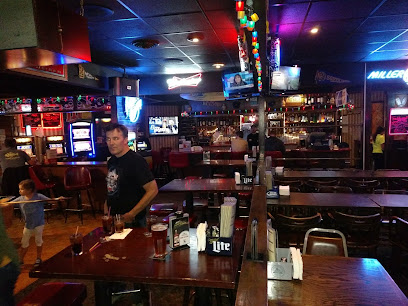
Mad Mary's Steakhouse & Saloon
Experience the best of South Dakota's culinary scene with mouthwatering steaks and a welcoming atmosphere at Mad Mary's Steakhouse & Saloon.
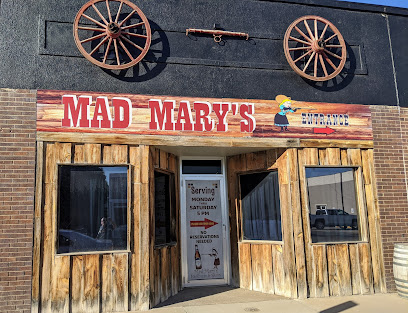
Richie Z's Brickhouse BBQ & Grill
Experience the authentic taste of South Dakota at Richie Z's Brickhouse BBQ & Grill, your go-to destination for mouth-watering barbecue and vibrant dining.
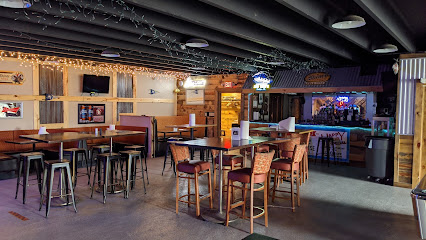
Silver Spur Restaurant
Discover the heart of American dining at Silver Spur Restaurant in Fort Pierre, where every meal is a celebration of flavor and friendship.
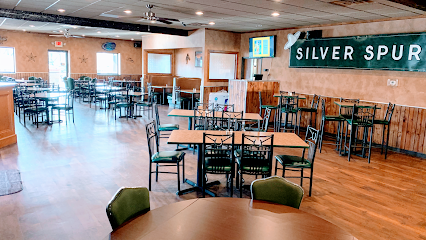
The LB - Longbranch
Discover the heart of South Dakota's culinary scene at The LB - Longbranch, a lively American bar and grill in Pierre.
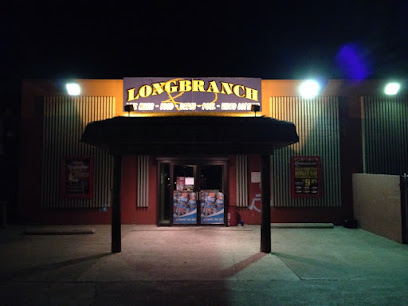
Grey Goose Store and Social Club
Discover the vibrant American cuisine and lively atmosphere at Grey Goose Store and Social Club in Pierre, South Dakota.
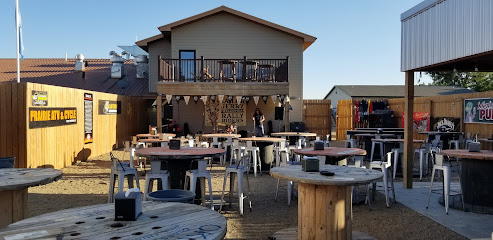
The Outpost Lodge
Experience the perfect blend of relaxation and adventure at The Outpost Lodge in South Dakota, featuring cozy accommodations and delicious dining.
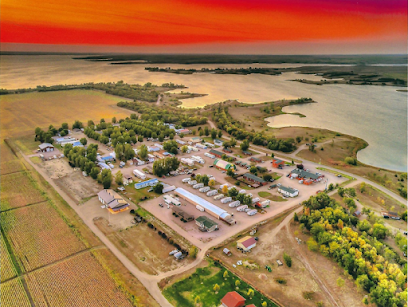
Bob's Lounge
Discover the charm of Bob's Lounge, a cozy bar in Pierre, South Dakota, where great drinks and warm hospitality await!
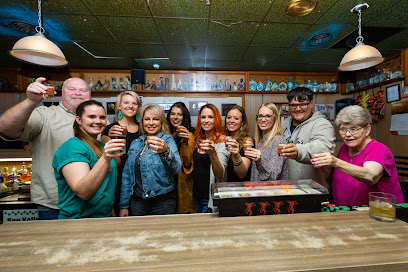
The Fieldhouse Sports & Spirits
The Fieldhouse Sports & Spirits: Your ultimate sports bar experience in Pierre, SD, with great food, drinks, and a lively atmosphere.

American Legion
Experience the heart of veteran camaraderie and community spirit at the American Legion in Pierre, South Dakota, a lively bar and gathering place.
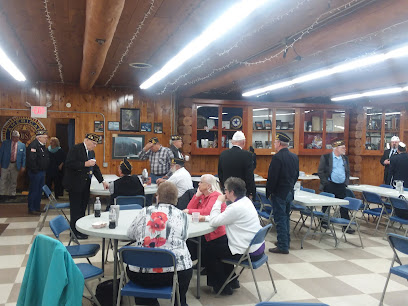
The Chuckwagon
Discover the vibrant flavors of The Chuckwagon in Fort Pierre, SD, where hearty grill dishes meet local charm for an unforgettable dining experience.
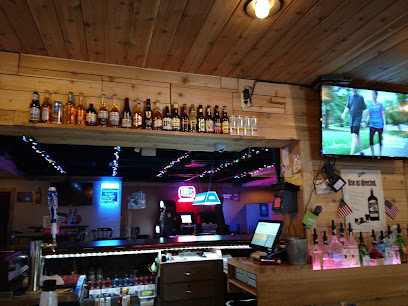
Oahe Sunset Lodging and Steakhouse
Experience the perfect blend of comfort and flavor at Oahe Sunset Lodging and Steakhouse, where exceptional steaks meet stunning lake views.
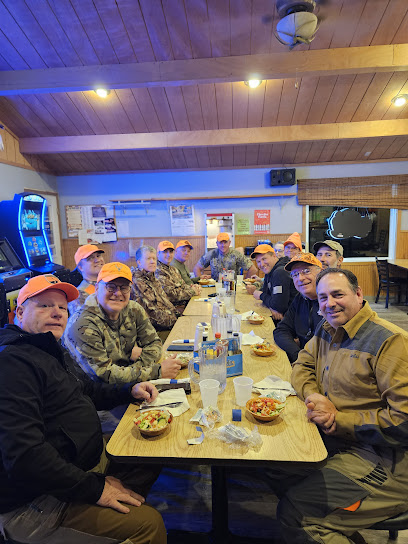
Windjammer Sports Bar
Discover the excitement at Windjammer Sports Bar in Mobridge, SD—where sports, food, and fun collide in a vibrant atmosphere.
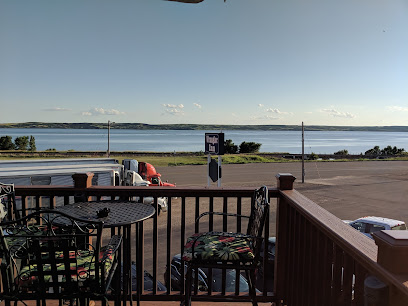
St Charles Lounge
Discover the vibrant ambiance of St Charles Lounge in Pierre, SD, where craft cocktails and celebrations come together in a charming setting.
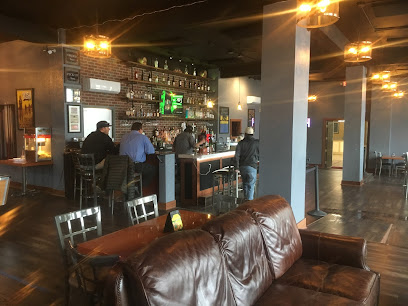
Local Phrases about Lake Oahe
-
- HelloHau
[how] - GoodbyeWopila
[woh-pee-lah] - YesHehan
[heh-hahn] - NoHinhan
[heen-hahn] - Please/You're welcomeAnpetu waste
[ahn-peh-too wah-shday] - Thank youPilamaya
[pee-lah-mah-yah] - Excuse me/SorryHecel o
[heh-chayl oh] - How are you?Hehaka wo?
[heh-hah-kah woh] - Fine. And you?Wopila. Niye?
[woh-pee-lah. nee-yay] - Do you speak English?Iyotan unciyapi nahan?
[ee-yo-tahn oon-chee-yah-pee nah-hahn] - I don't understandWan uncinpi
[wahn oon-cheen-pee]
- HelloHau
-
- I'd like to see the menu, pleaseMenu wanji yuha, waste
[meh-noo wahn-jee yuh-hah, wah-shday] - I don't eat meatWan wokisuye kinunpi
[wahn woh-kee-soo-yea kee-noon-pee] - Cheers!Ake wacinye
[ah-kay wah-chee-yay] - I would like to pay, pleaseWan wicayazapi yuha, waste
[wahn wee-chah-yah-zah-pee yuh-hah, wah-shday]
- I'd like to see the menu, pleaseMenu wanji yuha, waste
-
- Help!Aho
[ah-hoh] - Go away!Wicae
[wee-chah-ay] - Call the Police!Wicasa ohitika wanagi
[wee-chah-shah oh-hee-tee-kah wahn-ah-gee] - Call a doctor!Wicahpi wowapi
[wee-chah-pi woh-wah-pee] - I'm lostWan yuonihan
[wahn yoo-oh-nee-hahn] - I'm illWan ohitika
[wahn oh-hee-tee-kah]
- Help!Aho
-
- I'd like to buy...Wan iyokisni
[wahn ee-yoh-kee-shnee] - I'm just lookingWan kiwahiyaye
[wahn kee-wah-hee-yah-yay] - How much is it?Taku ksto?
[dah-koo ksh-toh] - That's too expensiveIyakiciya
[ee-yah-kee-chee-yah] - Can you lower the price?Iyahtaya
[ee-yah-gh-tah-yah]
- I'd like to buy...Wan iyokisni
-
- What time is it?Taku ksto?
[dah-koo ksh-toh] - It's one o'clockLakota Wicayutapi
[lah-koh-tah wee-chah-yuh-tah-pee] - Half past (10)Lakota 10 wicayutapi
[lah-koh-tah 10 wee-chah-yuh-tah-pee] - MorningHanhepi
[hahn-hay-pee] - AfternoonIyokipi
[ee-yoh-kee-pee] - EveningWicayapi
[wee-chah-yah-pee] - YesterdayAnpetu kin
[ahn-peh-too keen] - TodayAnpetu
[ahn-peh-too] - TomorrowAnpetu ki
[ahn-peh-too kee] - 1Lakota un
[lah-koh-tah oon] - 2Lakota kto
[lah-koh-tah ktoh] - 3Lakota ska
[lah-koh-tah skah] - 4Lakota zaptan
[lah-koh-tah zahp-tahn] - 5Lakota zaptan ksto
[lah-koh-tah zahp-tahn ksh-toh] - 6Lakota sice
[lah-koh-tah see-chay] - 7Lakota sice kto
[lah-koh-tah see-chay ktoh] - 8Lakota sice ska
[lah-koh-tah see-chay skah] - 9Lakota sice zaptan
[lah-koh-tah see-chay zahp-tahn] - 10Lakota skatapi
[lah-koh-tah skah-tah-pee]
- What time is it?Taku ksto?
-
- Where's a/the...?Hehan wanji...?
[heh-hahn wahn-jee] - What's the address?Hehan unpi...
[heh-hahn oon-pee] - Can you show me (on the map)?Iyotan opawinge...
[ee-yo-tahn oh-pah-weeng-ay] - When's the next (bus)?Wanikiya...
[wahn-ee-kee-yah] - A ticket (to ....)Sicatapi (ki ...)
[see-chah-tah-pee (kee)]
- Where's a/the...?Hehan wanji...?
History of Lake Oahe
-
Lake Oahe was formed by the construction of the Oahe Dam on the Missouri River. The project was part of the Flood Control Act of 1944, designed to provide hydroelectric power, irrigation, and flood control. The dam, completed in 1962, created a reservoir that extends over 230 miles from Pierre, South Dakota, to Bismarck, North Dakota.
-
The Oahe Mission was established in 1874 by Congregational missionaries near the present-day site of the Oahe Dam. The mission aimed to educate and convert the local Native American tribes, particularly the Lakota and Dakota Sioux. It played a significant role in the cultural exchange between European settlers and Native Americans.
-
The area around Lake Oahe has been inhabited by various Native American tribes for thousands of years. The Lakota and Dakota Sioux were the most prominent groups in this region. The lake and its surroundings are rich with cultural and spiritual significance for these tribes, featuring sacred sites, petroglyphs, and ancient burial grounds.
-
In 1804, the Lewis and Clark Expedition passed through the area that would later become Lake Oahe. The explorers documented their interactions with the native tribes and the diverse wildlife of the region. Their journey significantly contributed to the understanding and mapping of the American West.
-
The construction of the Oahe Dam brought significant economic benefits to the region. The hydroelectric power plant generates electricity for several states, while the reservoir supports agriculture through irrigation. Additionally, the lake has become a popular destination for recreational activities, boosting local tourism.
-
The creation of Lake Oahe led to the submergence of numerous Native American cultural sites and farmland. This displacement caused significant controversy and hardship among the local tribes, who lost access to ancestral lands and resources. Efforts have been made to address these issues through legal agreements and cultural preservation initiatives.
-
In 2011, Lake Oahe experienced record flooding due to heavy snowmelt and rainfall in the Missouri River basin. The floodwaters caused extensive damage to infrastructure and homes along the lake's shores. This event highlighted the challenges of managing such a large and dynamic water system.
-
Today, Lake Oahe is a major recreational destination, attracting visitors for fishing, boating, camping, and wildlife observation. The lake is home to a variety of fish species, including walleye, northern pike, and catfish, making it a popular spot for anglers. The surrounding state parks offer numerous amenities and picturesque landscapes for outdoor enthusiasts.
Lake Oahe Essentials
-
Lake Oahe is located in central South Dakota and stretches into North Dakota, but the most accessible point is through Pierre, the capital city of South Dakota. The nearest major airport is Pierre Regional Airport (PIR), located about 35 miles from the lake. From the airport, you can rent a car or take a taxi to reach the lake. Alternatively, you can drive from other major cities like Sioux Falls, which is approximately a 3-hour drive, or Rapid City, around 2.5 hours away.
-
Given the expansive nature of Lake Oahe, a car is the most convenient mode of transportation. Car rental services are available at Pierre Regional Airport. Public transport options are limited, and taxis are available but can be expensive for longer journeys. For those interested in exploring the lake by water, boat rentals are available at various marinas around the lake.
-
The official currency is the United States Dollar (USD). Credit and debit cards are widely accepted, including at most hotels, restaurants, and shops around Lake Oahe. However, it is advisable to carry some cash, especially if you plan to visit more remote areas or small establishments that may not accept cards. ATMs are available in Pierre and other nearby towns.
-
Lake Oahe is generally a safe destination for tourists. However, as with any travel destination, it is advisable to exercise standard safety precautions. Avoid isolated areas after dark and keep an eye on your belongings in crowded places. It is important to note that weather conditions can change rapidly; always check the weather forecast before heading out on the lake. There are no specific high-crime areas targeting tourists around Lake Oahe.
-
In case of an emergency, dial 911 for immediate assistance. The nearest hospital with emergency services is in Pierre, South Dakota. It is recommended to have travel insurance that covers medical emergencies. For minor health concerns, there are pharmacies in Pierre where you can purchase over-the-counter medications. Additionally, marinas and campgrounds around Lake Oahe have basic first-aid kits.
-
Fashion: Do dress in layers and bring appropriate gear for outdoor activities. Avoid wearing flip-flops or other inappropriate footwear for hiking or boating. Religion: There are no specific religious customs to observe, but always respect local traditions and any sacred sites. Public Transport: Public transport is limited, so plan your trips and rentals in advance. Greetings: A friendly handshake or a simple 'hello' is customary. Eating & Drinking: Do try the local cuisine, including fresh fish from the lake. Don't litter; always dispose of your trash properly.
-
To experience Lake Oahe like a local, consider visiting during the fall when the foliage is stunning. Engage with local fishers and boaters to learn about the best fishing spots. Don't miss attending local events and festivals in nearby towns, such as Oahe Days in Pierre. For a unique experience, book a guided fishing tour or a boat trip to explore the lake's hidden coves and inlets.
Nearby Cities to Lake Oahe
-
Things To Do in Bismarck
-
Things To Do in Mandan
-
Things To Do in Mitchell
-
Things To Do in Rapid City
-
Things To Do in Jamestown
-
Things To Do in Watertown
-
Things To Do in Mount Rushmore
-
Things To Do in Deadwood
-
Things To Do in Custer
-
Things To Do in Dickinson
-
Things To Do in Valley City
-
Things To Do in Brookings
-
Things To Do in Sioux Falls
-
Things To Do in Wahpeton
-
Things To Do in Fargo

